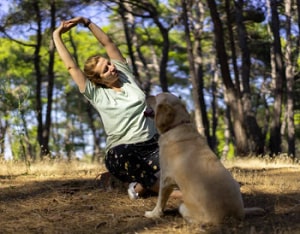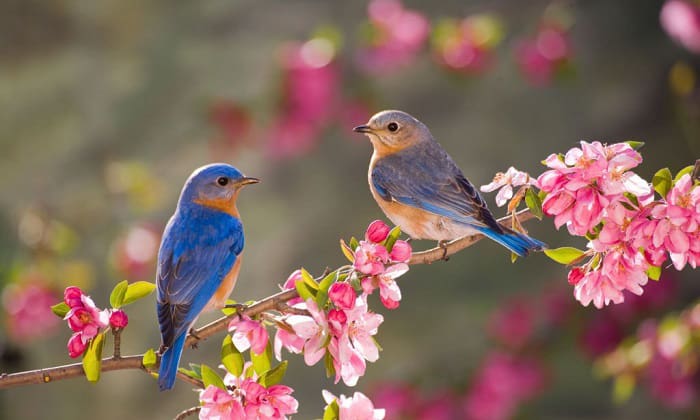Have you ever wondered at some point in your life, ‘how does the respiratory system in birds differ from the mammalian respiratory system?’ It is a fundamental question that explains how the respiratory system affects the functions of the different species.
This article will present the answer to the questions with facts, all in one place. Weighing the similarities and differences will give a more thorough understanding of what makes a bird’s respiratory system superior.
Table of Contents
Respiratory System Comparison: Mammals Vs. Birds
The respiratory system is in charge of the exchange of gasses in the body while getting rid of the wastes. Its general function is the same for all animals, but they work in different manners. Before anything else, let’s learn more about respiration.
1. What is Respiration?
Respiration is the process of exchanging oxygen and carbon dioxide in the body. The exchange occurs depending on the amount of each gas. Exhalation occurs to release oxygen from the system when there is a build-up of oxygen. At the same time, the oxygen reaches a low level, leading to inhalation or taking in oxygen.
Based on an accurate comparison of vertebrate lungs, birds and mammals have entirely different structures despite being two of the great classes that can sustain high oxygen consumption. There are some characteristics that avians have which are not present in mammals. Let’s take a look at the comparison.
2. Mammal Respiration
Mammal lungs and air sacs are what make up our respiratory system, and we breathe and exchange gas through the contractions and relaxation of muscles. The diaphragm is the large muscle at the base which plays the leading role in mammal respiration.
In detail, the air enters the nose to the nasal cavity, passing through the pharynx, larynx, and the trachea. There are several processes and protective mechanisms that prevent damage to the lungs and trachea. The airflow in a mammal’s respiratory system must reverse direction, so there is a moment when the lungs lack usable oxygen.
3. Avian Respiration
Generally, the respiratory system in birds is considered the most advanced in the animal kingdom. They have a pair of lungs that take up a large percentage of their bodies, and their lungs have surfaces favorable for gas exchange. The nares can be compared to human nostrils where the air is inhaled. The air flows to the tube, to the trachea, to the bronchi, and to the lungs.
What happens next is a unique gas exchange in birds only; they inhale and exhale two times for every respiration. In addition, the airflow is in a single direction rather than the two-direction airflow of other animals. Another distinct attribute of birds’ lungs is they don’t expand and contract, and this is because their lungs are not the ones that move the air but the complex system of air sacs with an efficient cyclical system.
4. Comparison
The general arrangement and function of mammal and avian respiratory systems are similar. Still, there are several differences that make one species superior to the other. The immediate answer here when asked ‘how does the respiratory system in birds differ from the mammalian respiratory system?’ is that avians have a cross-current gas exchange which is more systematic and effective than the uniform system of the mammalian lung.
Birds take two cycles of air intake for this gas exchange process to fill their lungs which take up a considerable portion of their bodies. Even when they are at higher altitudes with lower oxygen concentration, birds’ breathing allows them to obtain their required oxygen. Flight consumes a lot of energy, so birds need a lot of oxygen to help their metabolic process. Other known differences between the respiratory of these two species are:
- Mammals have nostrils while birds have nares.
- Mammals’ air sacs are located in the lungs, while birds have theirs in front and behind their lungs.
- Mammals inflate and deflate their lungs during respiration, while birds’ lungs retain a constant volume.
- Mammals have a larynx and pharynx
- Birds oxygen consumption increases during flight
- Birds use their respiratory system to communicate through the song, which is produced only when air flows outward across the syrinx.
Why Are the Lungs of Birds More Efficient Than Human Lungs?
Comparing bird lungs vs. human lungs, birds’ structures in the avian respiratory system are far superior. It is due to the directional respiratory system that enables them to successfully obtain oxygen to fuel their flight and aid their metabolic processes. This is achievable since the air flows in one direction, while blood passes along the other, resulting in a well-regulated gas exchange.
How Is Bird Respiration Different From Mammals?
For once, birds inhale and exhale twice per respiration, while mammals only do it once for every respiration. Another difference is that avians’ respiration takes place because of flight, while mammals contract and relax their rib cage muscles and diaphragm.
Do Birds’ Respiratory Systems Allow Them to Fly? How?
Yes. In detail, birds’ respiratory systems pump air through the opening in their bones. This helps keep them light and continuously supplies oxygen to the muscles enabling them to fly for long periods. There is also synchrony between avian breathing and wing motion. At the downstroke of the wingbeat, the peak of expiration happens.
Is Fish Respiration Similar to Birds?
Bird and fish respiratory systems are similar because they both have an efficient gas exchange. Their respiratory systems are designed for them to inhale and exhale air effectively.
Conclusion
Learning the answer to how the respiratory system in birds differ from the mammalian respiratory system made us realize that bird respiration is very efficient. While they are somewhat similar to mammalian respiration for their general function, it is undeniable that the gas exchange process significantly highlights the difference between the two species.
We hope that all information in this article helped answer the bugging question in your mind about avians and mammal respiratory systems. What do you think about this content? Please share your thoughts with us in the comments below.
Before you go, don’t forget to check more our other interesting topics of birds:
- Reasons hummingbirds chase each other.
- Why do birds know when to migrate?
- Some types of birds mate for life.

George and I became friends after a birdwatching trip with our new group. And we have been enjoying every adventure together. When he told me the idea of establishing a site that shares our experiences and fun, I immediately agreed. After trials and errors, here we have Thayerbirding.

















